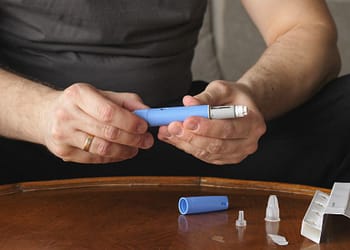At the 110th annual meeting of the Radiological Society of North America (RSNA), ScreenPoint Medical has presented a major update of its artificial intelligence tool Transpara, designed to improve breast cancer detection and accurate assessment of breast density
Breast Density Assessment with Transpara 2.1
With FDA approval, the new Transpara 2.1 version promises to revolutionize the clinical workflow of radiologists by incorporating advanced features, such as Breast density assessment and temporal comparison capabilities unique in the market.
Transpara has established itself as the most clinically validated artificial intelligence in the field of breast cancer. This system acts as a "second pair of eyes" for radiologists, helping them to identify signs of cancer in early stages and reduce the need for repeated consultations. The new version, Transpara 2.1, introduces significant advances thanks to a updated algorithm that integrates data collected from users around the world.
One of the most innovative features of Transpara 2.1 is its ability to perform temporal comparison analysis. This system allows suspicious areas in a current study to be evaluated against up to three previous studies, carried out over a period of up to six years.
According to Professor Nico Karssemeijer, co-founder and chief scientific officer of ScreenPoint Medical, this feature aligned with traditional radiology practice is an important milestone in the evolution of artificial intelligence in medical diagnostics. In addition, the incorporation of historical values significantly improves system performance without significantly increasing processing time.
Clinical highlights and recent studies
Several studies were presented at RSNA highlighting the clinical and operational benefits of Transpara. Among them, a study conducted by UMass Memorial Health demonstrated how using artificial intelligence to prioritize readings in mammography significantly reduces turnaround time, optimizing workflow in settings with a shortage of specialized personnel. Likewise, in the German breast cancer screening program, Transpara proved to be a valuable third independent reader, increasing the detection rate of invasive cancers.
Another key aspect of the algorithm's performance is its ability to identify cancer cases in both dense and non-dense breasts, as evidenced by a digital tomosynthesis study presented at RSNA. These findings reinforce the versatility and effectiveness of the system, highlighting its strong predictive value and its ability to support radiologists in diagnosis in a wide variety of cases.
A legacy of scientific validation
Transpara stands out not only for its innovative capabilities, but also for the robustness of its scientific validation. With more than 35 peer-reviewed publications, it is the only artificial intelligence algorithm for breast cancer evaluated in real populations on a large scale on multiple occasions. Prestigious institutions such as UCLA, the Capital Region of Denmark, Lund University in Sweden and the Reina Sofía Hospital in Córdoba have endorsed Transpara's efficacy. These investigations have shown that up to 45% of interval cancers can be detected earlier using this technology, representing a crucial advance in early detection and reducing radiologists' workload.
The future of breast cancer detection
With the introduction of Transpara 2.1, ScreenPoint Medical reaffirms its commitment to innovation in healthcare and the improvement of clinical outcomes. The tool’s new capabilities promise not only to optimize diagnosis, but also to facilitate the work of radiologists in a context where the demand for medical services continues to increase.
Artificial intelligence is positioning itself as an essential ally in the fight against breast cancer, and Transpara is leading this advance with technology designed to save lives and transform medical practice.
Towards a comprehensive approach in the fight against breast cancer
Transpara 2.1 not only optimizes the early detection of breast cancer, but also reflects the impact of technological innovation in improving clinical outcomes. Complementing these advances, projects such as the one developed in Galicia, focused on genetics applied to the treatment of breast cancer, demonstrate how science continues to transform the diagnosis and treatment of this disease






